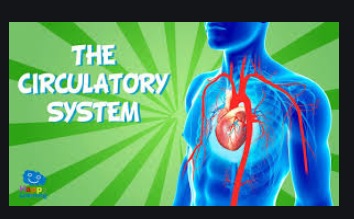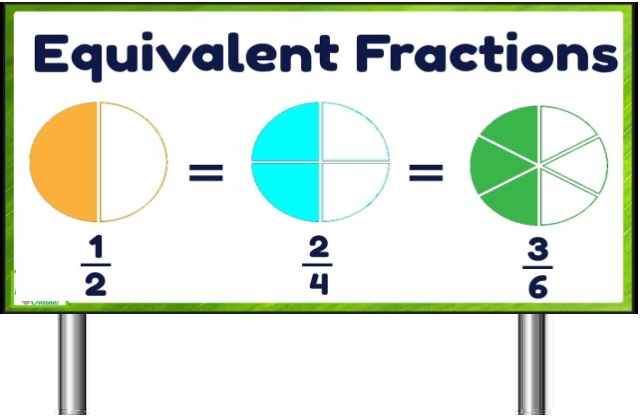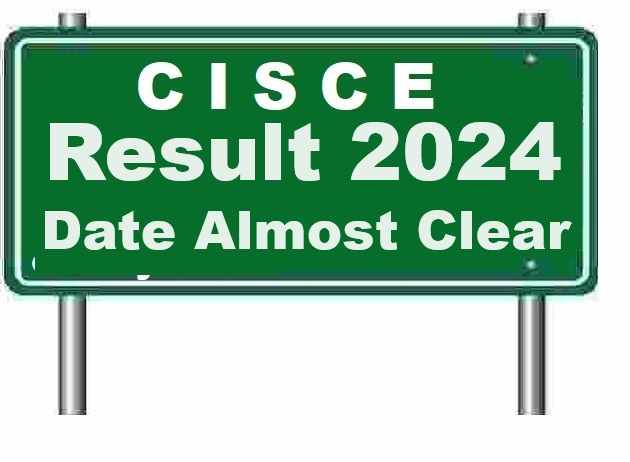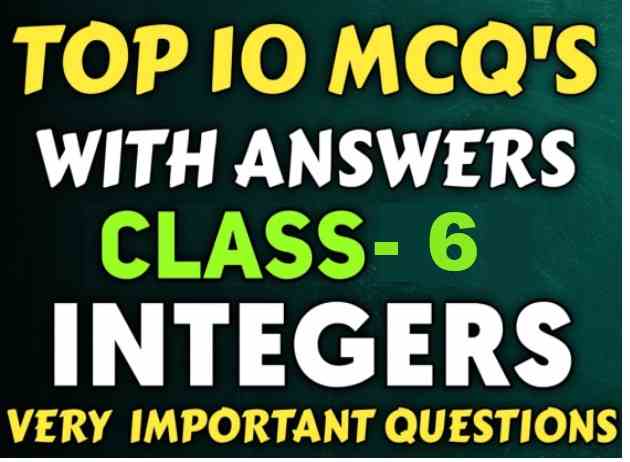The Circulatory System ICSE Class-8th Concise Selina Biology Solutions Chapter-6. We Provide Step by Step Answer of MCQs Objective, True False , Fill in the blanks , Match the following , Short /Long Answer Type of Exercise-6 Circulatory System . Visit official Website CISCE for detail information about ICSE Board Class-8.
The Circulatory System ICSE Class-8th Concise Selina Biology Solutions Chapter-6
REVIEW QUESTIONS
Multiple Choice Questions of Circulatory System ICSE Class-8th
1. Put a tick mark (✓) against the correct alternative in the following statements:
(a) The only artery which carries deoxygenated blood is called,
- Hepatic artery
- Pulmonary artery
- Aorta
- Renal artery
Answer:
Pulmonary artery
(b) Pulmonary vein carries
- Oxygenated blood
- Deoxygenated blood
- Glucose-deficient blood
- CO2 laden blood
Answer:
Oxygenated blood
(c) Function of WBCs is to
- Transport oxygen
- Help in clotting of blood
- Provide immunity
- Provide storage of food.
Answer:
Provide immunity
(d) Blood Capillary is a
- Broad tube
- Artery with thick wall
- Vein with large lumen
- Narrow tube made up of endothelium only.
Answer:
Narrow tube made up of endothelium only.
(e) Nucleus is absent in
- RBCs
- WBCs
- All blood cells
- Liver cells.
Answer:
- RBCs
(f) Sphygmomanometer measures
- Pulse rate
- Heart beat
- Blood pressure
- Brain activity
Answer:
Blood pressure
(g) The blood tastes saltish due to the presence of dissolved:
- Sodium chloride
- Potassium chloride
- Ammonium nitrate
- Sodium nitrate
Answer:
Sodium chloride
Short Answer Questions: Circulatory System ICSE Class-8th
Question 1.
1. Differentiate between the following pair of terms:
(a) Pulmonary artery and pulmonary vein.
(b) Vena cava and aorta.
(c) Platelets and WBC.
(d) RBC and WBC Ans.
Answer:
(a) Differentiate between Pulmonary artery and pulmonary vein.
| Pulmonary artery | Pulmonary vein |
| 1. This involves circulation of blood from the heart to the lungs. | 1. This involves circulation of blood to the heart from the lungs. |
| 2. It carries deoxygenated blood. | 2. It carries oxygenated blood. |
(b) Differentiate between Vena cava and Aorta
| Vena Cava | Aorta |
| 1. Vena Cava is a large vein. | 1. Aorta is the large artery. |
| 2. It carries deoxygenated blood from the upper and lower parts of the body i.e. head and shoulders. | 2. It carries oxygenated blood to all parts of the body through its branches. |
(c) Differentiate between Blood platelets and blood group.
| Platelets | WBC |
| 1. These are colourless, oval or round, cytoplasmic fragments | 1. WBC are colourless and lack haemoglobin, larger in quantity, and have distinct oval and lobed nucleus. |
| 2. These play a major role in blood clotting. | 2. They prevent body from disease causing germs by providing immunity |
| 3. Their life span is 3-5 days and it is called thrombocytes. | 3. Their life span is short i.e. 5 to 20 days. |
(d)Differentiate between RBC and WBC
| RBC | WBC |
| 1. They do not have nucleus at maturity. | 1. They have a large characteristic nucleus. |
| 2. They possess haemoglobin and are red. | 2. They are colourless as they have no pigment. |
| 3. They help in transport of respiratory gases. | 3. They help in defence mechanism. |
Question 2.
Give any three differences between an artery and a vein:
Answer:
Following are the differences between the artery and a vein:
| Artery | Vein |
| 1. Arteries carry blood from the heart to various body parts. | 1. Veins carry blood from different body parts to the heart. |
| 2. These carry oxygenated blood (except the pulmonary artery). | 2. These carry deoxygenated blood (except the pulmonary vein). |
| 3. B lood flows with h igh speed and under high pressure. | 3. Blood flows with low speed and under low pressure. |
Question 3.
Fill in the blanks with suitable words given below:
a. The two lower chambers of the heart are called ………….
Ans :- The two lower chambers of the heart are called ventricles.
b. The pulmonary artery takes the blood from the ventricles to the lungs.
Ans :- The pulmonary artery takes the blood from the ventricles to the lungs.
c. The blood loaded with carbon dioxide from the body comes into the ……….. of the heart.
Ans :- The blood loaded with carbon dioxide from the body comes into the right auricle of the heart.
d. The oxygen-rich blood from the lungs comes into the …………of the heart.
Ans :- The oxygen-rich blood from the lungs comes into the left ventricle of the heart.
e. The oxygen-rich blood is pumped into different parts of the body through…………
Ans :- The oxygen-rich blood is pumped into different parts of the body through aorta.
f. The carbon dioxide loaded blood from right ventricle is pumped into the lungs …………. artery.
Ans :- The carbon dioxide loaded blood from right ventricle is pumped into the lungs pulmonary artery
g. The instrument used to find out the blood pressure is known as …………………….
Ans :- The instrument used to find out the blood pressure is known as sphygmomanometer.
h. The colour of a red blood cell is due to ………….
Ans :- The colour of a red blood cell is due to haemoglobin.
i. The blood plasma contains a dissolved substance called ………..
Ans :- The blood plasma contains a dissolved substance called fibrinogen.
j. The liquid part of coagulated blood is known as……….
Ans :- The blood plasma contains a dissolved substance called fibrinogen.
Question 4.
In which organ of our body does blood get oxygenated?
Answer:
Blood becomes oxygenated in the lungs. The oxygenated blood is returned to left verticles by the pulmonary vein.
Question 5.
Which side of the heart (left or right) contains oxygenated blood?
Answer:
The left side of the heart contains oxygenated blood.
Question 6.
What is the role of haemoglobin in the blood ?
Answer:
The haemoglobin is the respiratory pigment which is formed of the iron containing part known as haemin and protein part known as globin. It helps to transport respiratory gases (oxygen).
Question 7.
Name the disease in which the number of platelets reduces to 25,000 – 30,000 per cubic mm of blood. State its major symptoms.
Answer:
Dengue fever is one such disease in which the number of platelets get reduced to as low as 25-30 thousands per cubic mm of blood. The major symptoms of dengue are high fever, rashes or red spots on body, nausea or vomiting, pain in abdomen, back, or back of the eyes and muscles.
Long Answer Questions: Circulatory System ICSE Class-8th
Question 1.
Given alongside is a diagram of human heart showing its internal structures. Label the parts marked 1 to 6, and answer the following questions.
(a) Which type of blood is carried by the blood vessel marked 2?
(b) Name the main artery which takes the blood from heart to different parts of the body?
(c) Which chamber of the heart receives deoxygenated blood from the body?
Answer:
- Left pulmonary artery
- Superior vena cava
- Left pulmonary vein
- Right auricle
- Left auricle
- Left ventricle
(a) Deoxygentated blood.
(b) Aortic arch (Aorta).
(c) Right Atrium
Question 2.
You can see some blood vessels on the outside of the hands specially in older people. Are those veins or arteries ? How can you confirm your answer ?
Answer:
In older persons the skin becomes loose as the fat below becomes less with age and the vessels passing through these areas especially on the outside of the hands become prominent. These are veins as they flow superficially. The veins are thin and less muscular. These carry the blood to the heart veins are placed superficially so they are easily visible to the eye and are prominent.
The blood in the veins will be carrying CO2 and will have many substances like sugar, amino acids, chemicals and bacteria.
Question 3.
Give the functions of lymph. Differentiate between Blood and the lymph.
Answer:
Functions of lymph are:
- Nutritive: It supplies nutrition and oxygen to those parts where blood cannot reach.
- Drainage: It drains away excess tissue fluid and metabolites and returns proteins to the blood from tissue spaces.
- Absorption: It absorbs the fats from the intestine through lymphatics.
- Defence: Lymphocytes and monocytes of the lymph function to protect the body. The lymphatics also remove bacteria from the tissues.
Difference between Blood and Lymph
| Lymph | Blood |
| 1. It contains blood plasma without blood proteins and some RBC. | 1. It contains blood plasms with proteins and all three types of blood cells namely RBC, WBC and blood platelets. |
| 2. They are light yellow in colour and does not contain RBC and haemoglobin. | 2. They are red in colour due to presence of haemoglobin in RBC, |
| 3. It doesnot carry Oxygen. | 3. It carries oxygen in the body. |
| 4. It is the part of open circulatory system. | 4. It is the part of closed circulatory system. |
Question 4.
Name any two heart conditions that occur commonly. Briefly explain each of them.
Answer:
Palpitations: Sometimes, one may experience the heart beating too hard or too fast or sometimes even skipping a beat. This can be frightening, but not serious or harmful and often this condition goes away on its own. Most of the time it is caused by stress or anxiety. Sometimes certain types of food may also cause palpitations.
In rare cases, palpitations may be an indication of a more serious heart condition, specially if it is accompanied by shortness of breath, dizziness or chest pain.
Hypertension: This is a condition that occurs in a person when blood flows through the blood vessels with a force greater than normal. This is also called High Blood Pressure. Hypertension can strain the heart, damage blood vessels and increase the risk of a heart attack or stroke.
Question 5.
During surgical operations or during accidents, the patient may be given blood from outside to save his life. What is the technical name of this process ? Briefly explain the precautions to be observed and taken in this process.
Answer:
During surgical operation or an accident when excess of bleeding takes place, the patient may be given blood from outside to save his life.
The transfer of blood from the donor to the recipient is called blood transfusion.
The following precautions are taken before the blood is given to the needy person:
-
- Matching of the donor’s blood with that of the recipient should be done.
- It should be made sure clinically that blood of donor is free from any infection.
Sterilization of all the instruments to be used during the operation is must.
Question 6.
State briefly, the difference between white blood cells and the red blood cells.
Answer:
Difference between white blood cells and the red blood cells:
| RBC | WBC |
| 1. They do not have nucleus at maturity. | 1. They have a large characteristic nucleus. |
| 2. They possess haemoglobin and are red. | 2. They are colourless as they have no pigment. |
| 3. They help in transport of respiratory gases. | 3. They help in defence mechanism. |
| 4. Life span is 120 days. | 4. WBC have a short life span of 5 to 20 days. |
| 5. They are about 5 million/mm3 of blood. | 5. They are about 7000/ mm3 of blood. |
| 6. In the embryonic stage the RBC are formed in the liver and spleen. But after birth, they are formed in the red bone marrow. | 6. WBC are formed in the red bone marrow. |
Question 7.
Answer very briefly, the following:
(a) Red Blood cells have no nucleus, then why do we call them cells?
(b) Why is it necessary to know The blood groups of the donor as well as the recipient ?
(c) Why should the blood going away from the stomach and intestines pass through the liver and not directly to heart?
Answer:
(a) RBC are formed in the liver and spleen when the organisjn is foetus. After birth these are formed in the red bone marrow. At the time of formation of RBC’s they have nucleus but later on they loose nucleus. Those enucleated cells perform all the functions of a cell so these are called cells.
RBC’s are surrounded by semipermeable plasma membrane. It contains homogenous cytoplasm and it is without the nucleus, endoplasmic reticulum, mitochondria, ribosomes and centrioles. RBC’s get advantage due to this condition. Corpuscles have more space to hold haemoglobin. It can as well give more oxygen by the haemoglobin to the tissue cells. So the enucleated condition is more useful to the tissue cells. The necessity of work has made them without nucleus and perform all the functions of the cells so they are called cells.
(b)
Before transfusion of blood, it is most essential to determine the blood group of the donor and the recipient. The blood group of the donor and the recipient must match with each other, otherwise the RBC’s will stick to each other and thus the life of a recipient may be in danger as the blood groups are different. The sticking is due to the antigens (proteins) found in the blood of the donor and the antibodies found in the blood of the recipient.
(c)
The blood from the stomach and the intestine goes to liver before going to the heart. Liver monitors the substances before passing into the body. Excess of glucose is retained by the liver in the form of glycogen and the excess amino acids are broken down by the liver. Harmful chemicals are detoxified and bacteria are destroyed and excess minerals, water and vitamins are stored in the liver.
Question 8.
Name the three kinds of blood vessels found in human beings. With the help of suitable diagrams, differentiate between them.
Answer:
The three kind of blood vessels found in human beings are arteries, veins and capillaries.
- Arteries are the blood vessels that carry blood from the heart to the various parts of the body.
- Veins are the blood vessels that carry blood from the body parts to the heart.
- Capillaries: These are the terminal branches of an artery, which rejoin to form a vein. A capillary is a very narrow tube whose walls have a single layer of cells with no muscles. Although the wall of a capillary is veiy thin, yet an exchange of nutrients, waste products and gases take place between the blood and the body fluids.
Differences:
Arteries
- Carry blood away from the heart.
- Have thick and more muscular walls.
- Carry oxygenated blood (except pulmonary artery which carries deoxygenated blood).
- The blood flows with jerks and under great force.
Veins
- Carry blood towards the heart.
- Have thin and less muscular walls.
- Carry deoxygenated blood (except pulmonary vein which carries oxygenated blood).
- The blood flows smoothly and under little pressure.
Capillaries:
- Arteries after entering an organ divide into number of smaller branches called arterioles which further divide repeatedly to form a network of fine branches called capillaries.
- The walls of the capillaries are very thin and are one cell deep.
- The Capillaries after the metabolic exchange unite to form larger vessels called venules, which again unite to form a vein.
— : end of Circulatory System Solutions :–
Return to- ICSE Class -8 Selina Concise Biology Solutions
Thanks




